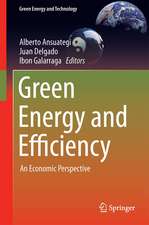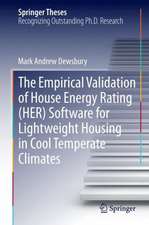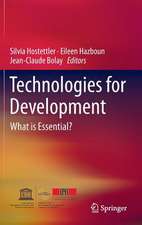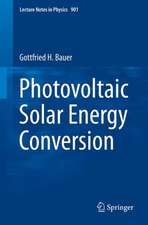Ejectors for Efficient Refrigeration: Design, Applications and Computational Fluid Dynamics
Autor Giuseppe Grazzini, Adriano Milazzo, Federico Mazzellien Limba Engleză Hardback – 3 apr 2018
| Toate formatele și edițiile | Preț | Express |
|---|---|---|
| Paperback (1) | 579.20 lei 6-8 săpt. | |
| Springer International Publishing – 12 ian 2019 | 579.20 lei 6-8 săpt. | |
| Hardback (1) | 728.11 lei 6-8 săpt. | |
| Springer International Publishing – 3 apr 2018 | 728.11 lei 6-8 săpt. |
Preț: 728.11 lei
Preț vechi: 887.94 lei
-18% Nou
Puncte Express: 1092
Preț estimativ în valută:
139.34€ • 144.94$ • 115.03£
139.34€ • 144.94$ • 115.03£
Carte tipărită la comandă
Livrare economică 15-29 aprilie
Preluare comenzi: 021 569.72.76
Specificații
ISBN-13: 9783319752433
ISBN-10: 331975243X
Pagini: 200
Ilustrații: XVII, 180 p. 97 illus., 51 illus. in color.
Dimensiuni: 155 x 235 mm
Greutate: 0.46 kg
Ediția:1st ed. 2018
Editura: Springer International Publishing
Colecția Springer
Locul publicării:Cham, Switzerland
ISBN-10: 331975243X
Pagini: 200
Ilustrații: XVII, 180 p. 97 illus., 51 illus. in color.
Dimensiuni: 155 x 235 mm
Greutate: 0.46 kg
Ediția:1st ed. 2018
Editura: Springer International Publishing
Colecția Springer
Locul publicării:Cham, Switzerland
Cuprins
Chapter 1. Introduction.- Chapter 2. Physics of the ejectors.- Chapter 3.Ejector design.- Chapter 4.Ejector CFD modelling.- Chapter 5.Experimental Activity.- Chapter 6.Concluding remarks.
Notă biografică
Dr. Giuseppe Grazzini is Professor of Thermodynamics and Heat Transfer at the University of Florence. He has been active in research on ejectors for over two decades. He led the Thermodynamics and Heat Transfer Laboratory research group at Florence University, supervising the development of the first prototype of an ejector chiller. He has published his results widely in international scientific journals.
Dr. Adriano Milazzo is Associate Professor of Thermodynamics and Heat Transfer at the University of Florence. He has published multiple papers in international scientific journals on ejectors, and coordinated the design of the ejector chiller prototype at Frigel Firenze, a leader in advanced process cooling technology.
Dr. Federico Mazzelli is Lecturer of Thermodynamics and Heat Transfer at the University of Florence. He earned his Ph.D. at University of Florence working on the experimental and numerical analysis of an industrial ejector chiller. His current research focuses on the CFD analysis of multiphase supersonic ejectors.
Dr. Adriano Milazzo is Associate Professor of Thermodynamics and Heat Transfer at the University of Florence. He has published multiple papers in international scientific journals on ejectors, and coordinated the design of the ejector chiller prototype at Frigel Firenze, a leader in advanced process cooling technology.
Dr. Federico Mazzelli is Lecturer of Thermodynamics and Heat Transfer at the University of Florence. He earned his Ph.D. at University of Florence working on the experimental and numerical analysis of an industrial ejector chiller. His current research focuses on the CFD analysis of multiphase supersonic ejectors.
Textul de pe ultima copertă
Encompassing both practical applications and recent research developments, this book takes the reader from fundamental physics, through cutting-edge new designs of ejectors for refrigeration. The authors’ unique vision marries successful design, system optimization, and operation experience with insights on the application of cutting-edge Computational Fluid Dynamics (CFD) models. This robust treatment leads the way forward in developing improved ejector technologies. The book covers ejectors used for heat powered refrigeration and for expansion work recovery in compression refrigerators, with special emphasis on two-phase flows of “natural” fluids within the ejector, i.e. steam and carbon dioxide. It features worked examples, detailed research results, and analysis tools.
Caracteristici
Covers both single-phase and two-phase ejectors for refrigeration The only resource combining classic numerical models with emerging Computational Fluid Dynamics solutions Emphasizes analysis tools for using ‘natural’ fluids such as steam and CO2




























